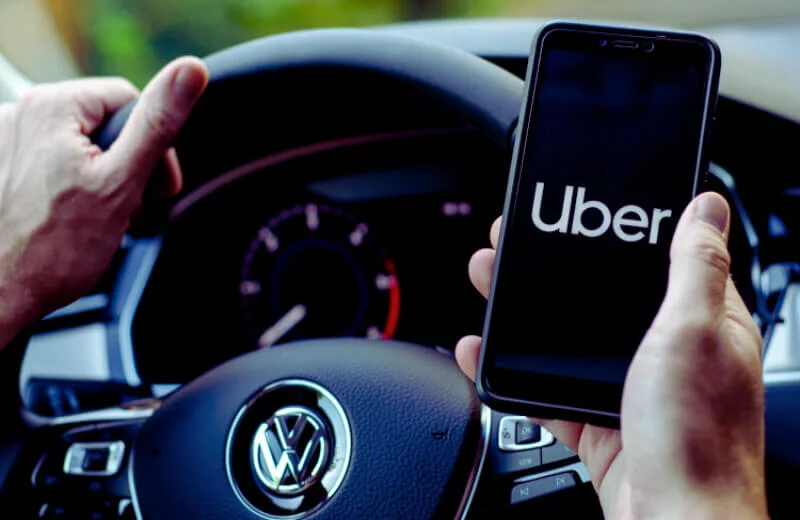Table of Contents Show
Uber, the ride-hailing pioneer, has transformed the way people move around cities worldwide. Since its inception in 2009, it has disrupted the traditional taxi industry and has become a household name. However, despite its undeniable impact on the transportation industry, Uber’s profitability has been a topic of debate and scrutiny. In this article, we will delve into the financial landscape of Uber, exploring its revenue streams, costs, and the ongoing challenges it faces on its path to profitability.
Is Uber Profitable?
In the midst of a complex economic landscape characterized by surging inflation rates and relentless competitive pressures, the ride-hailing giant, Uber, has accomplished a historic and awe-inspiring milestone that has sent ripples throughout the business world. In the second quarter of 2023, a period marked by uncertainty and financial turbulence for many, Uber not only weathered the storm but soared to new heights by reporting its very first operating profit.
This remarkable achievement represents a triumphant turnaround for Uber, a company that has navigated treacherous financial waters, accumulating staggering operating losses amounting to an eye-watering $31.5 billion since it first unveiled its financial details to the world in 2014. This long and arduous journey through losses has culminated in a financial feat that defies expectations and redefines Uber’s financial trajectory.
A multitude of factors coalesced to enable this extraordinary transformation. First and foremost, the post-pandemic world witnessed an insatiable demand for rides, as individuals yearned to break free from lockdowns and restrictions, seeking the convenience and safety of Uber’s services. Simultaneously, Uber’s strategic foray into the realm of food delivery proved to be a resounding success, bolstering the company’s bottom line.
The numbers tell a story of resilience and adaptability. Uber’s financials experienced a seismic shift, as it transitioned from a daunting loss of $713 million in the prior year to a pre-tax profit of $326 million in the second quarter of 2023, a period that concluded in July. This remarkable pivot underscores Uber’s ability to not just survive but thrive in a challenging economic landscape.

Furthermore, Uber’s turnover witnessed a substantial upswing, registering a 14% increase, surging to a substantial $9.2 billion. Astonishingly, the company managed to maintain a tight grip on costs, with expenses growing by a mere 1%. The real testament to Uber’s resurgence, however, lies in the astonishing 22% year-on-year surge in the number of trips taken, amounting to a staggering 2.3 billion rides. To put this into perspective, it equates to an astonishing 25 million journeys taking place daily across the globe, a testament to Uber’s unwavering popularity and global reach.
Dara Khosrowshahi, Uber’s indefatigable chief executive, articulated the underlying factors that propelled the company to this historic milestone. He stated, “Robust demand, new growth initiatives, and continued cost discipline resulted in an excellent quarter,” highlighting the confluence of factors that have played a pivotal role in Uber’s resurgence.
Looking ahead, Uber has issued a forecast that exceeds even the most optimistic expectations. The company anticipates that its EBITDA (earnings before interest, taxes, depreciation, and amortization) will reach a range of $975 million to $1.025 billion for the current quarter, a prediction that surpasses Wall Street’s earlier estimate of $915 million. This bullish outlook signifies not only Uber’s unwavering confidence in its newfound financial prowess but also its commitment to delivering value to its shareholders and stakeholders alike.
Uber’s Revenue Streams
Uber primarily generates revenue through several key sources:
- Ride-Sharing Services: The core of Uber’s business is its ride-sharing platform, connecting drivers and riders. Uber takes a commission from each ride, which varies by location but generally ranges from 20% to 30% of the fare.
- Uber Eats: Uber Eats, the company’s food delivery service, has seen substantial growth in recent years. Uber charges restaurants a percentage of the order total and customers a delivery fee.
- Uber Freight: Uber Freight connects shippers and truck drivers. It earns revenue by charging fees to shippers and, in some cases, to carriers as well.
- Other Services: Uber offers various other services, such as electric bikes and scooters, as well as premium options like Uber Black and Uber Comfort.
ubeChallenges to Profitability
Despite its growth and market presence, Uber faces several challenges on its journey to profitability:
- Regulatory Hurdles: Uber operates in a complex regulatory environment, facing challenges and legal battles in various regions. Compliance with local regulations often requires substantial investments.
- Driver Compensation: Driver incentives and earnings are significant expenses for Uber. Striking a balance between keeping drivers satisfied and reducing these costs is a persistent challenge.
- Competition: Uber faces competition from other ride-hailing platforms, particularly in international markets. This competition can drive up expenses related to customer acquisition and retention.
- Diversification Risks: Uber’s diversification into various services like food delivery and freight brings additional complexity and competition. These ventures can take time to become profitable.
- Economic Factors: External economic factors, such as changes in fuel prices and economic downturns, can impact Uber’s profitability and demand for its services.
Investor Sentiment
Despite the ongoing losses, investor sentiment toward Uber has been relatively positive. The company’s ability to generate substantial revenue and its leading position in key markets have attracted investment. Uber’s initial public offering (IPO) in 2019 raised billions of dollars, and it continues to receive funding from both public and private investors.
Conclusion
Is Uber profitable? The answer is complex. While Uber has demonstrated its ability to generate significant revenue, it has also reported substantial operating losses as it invests in growth and navigates regulatory challenges. Achieving profitability remains a priority for the company, and it has outlined a path to reach that goal through cost-cutting measures and operational efficiency.
Uber’s journey underscores the challenges of scaling a technology-driven platform in a highly competitive and regulated industry. As it continues to evolve and adapt, Uber’s ability to balance revenue growth with cost management will determine its profitability in the years ahead. For now, the company remains a prominent player in the ride-sharing and delivery sectors, with the potential to reshape urban transportation worldwide.











